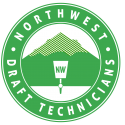Challenges of Draft Coffee Maintenance
Draft coffee is a trend that has been sweeping through bars, breweries, cafes, and coffee shops. Cold brew has already been a trending hit, costing more per cup at your local coffee shop than the average cup of joe, and stored in sealed kegs, so that cold brew can be made in huge batches and sold at surprising freshness throughout the month.
As an increasing number of venues and brands have started keeping cold brew coffee on tap, or even installing a kegerator or draft system for draft coffee, it’s important to face the challenges of draft coffee maintenance head-on. As the Portland, OR, area experts on draft line maintenance, Northwest Draft Technicians would like to share a few pointers to help beginners get started and help current draft coffee system owners up their maintenance game.
Let’s talk about the challenges of draft coffee maintenance and how to overcome them.

Keeping the Lines Clean
One of the biggest challenges in maintaining any draft system is keeping the lines clean. Even though a sealed and pressurized keg can stay fresh for months, your lines are a different story. Whether you have a kegerator or a full draft system, the tubing that makes it all possible needs to be flushed, cleaned, and sanitized at least once a week, and many venues sanitize their lines every day.
When it comes to coffee, cleaning the draft lines is especially important without the cleansing power of alcohol in the lines. Many venues run more than just coffee through their draft systems, and you may also be dealing with creamer or sweeteners.
Fortunately, routine draft line cleaning is easy. Simply keep a keg of cleaner and a keg of sanitizer (always both, always in that order) and connect your lines to them for a quick flush. Then clean and sanitize your handles and valves.
Deep cleaning, however, should be done every few months as part of your draft system maintenance process to ensure every valve, seal, and line is pristine before your next keg goes in. Northwest Draft Technicians can establish the proper cleaning routine for your specific equipment and needs.
The Perfect Nitro Injection
Increasing the pressure and nitrogen levels in your keg can also effectively inject it with nitrogen, giving the coffee a creamy texture and a foamy head. This is called nitro cold brew and is a favorite among draft coffee drinkers. However, getting the pressure just right and maintaining a system that provides good nitro injection is essential.
Normal cold brew is served at about 6-8 PSI, while nitro will require slowly raising the pressure in your keg by about 5 PSI per 20 minutes until the pressure is about 35-45 PSI in the keg. This will create a cascading effect and a foamy head.
Achieving the perfect nitro coffee, like draft beers, is more of an art form than an exact science. The right pressure will depend on your system, your brew, and your pour. If you notice any variation in the consistency of your cold brew, at low or high pressure, you will need to troubleshoot the system. We also don’t advise using any carbon dioxide in your draft coffee system, as carbonating coffee alters the mouthfeel and flavor significantly.
Dairy and Sugar in the Draft Lines
Are you serving your draft coffee black or with cream and sugar? There are many, many ways to blend your draft coffee once the cold brew is out of the keg but running dairy or sweeteners through your lines is always a risk without diligent draft system maintenance. When it comes to dairy, you need both cold lines and nightly cleaning to ensure not a single drop of milk or cream has a chance to sour in your system. If a tap or line ever smells off during service, quickly replace the line and check your dairy source immediately.
Sweeteners can gum up the system and, because of sugars, are more likely to become a breeding ground for bacteria than lines with just alcohol or black coffee. If you have sweetened coffee or pipe in sweetener, clean and sanitize your lines at least every other day and wash connecting components that have the potential to become sticky.
Running dairy or sweetener through your draft system also will increase your need for maintenance and regular inspections to ensure there is no milk or sugar building up, because that has the potential to become dangerous.
Keeping the Draft Lines Cold
Lastly, cold brew calls for cold lines. Many venues serve their draft coffee at room temperature, but many patrons prefer their cold brew cold. If you are running dairy, you definitely need cold lines. There are two ways to address this. You can keep a chilled kegerator and rely on short lines, or you can build a cool channel for your lines if your kegs are further back stored in the walk-in cooler.
Cold lines add several more feet of refrigerated space to your venue design and additional maintenance to your to-do list.
Draft Coffee Maintenance Made Easy with Northwest Draft Technicians
If you have recently installed a draft coffee system, considering a draft line installation, or have been troubleshooting your draft coffee for a while, Northwest Draft Technicians are here to make draft maintenance tasks a breeze for any business. With our draft system maintenance services, you can not only hone your cleaning routine with the advice of draft system pros, but you can also rely on deep cleaning, regular inspections, and timely repairs without having to make a call every time your lines sputter. We can help any restaurant, bar, or venue in the Portland, OR, area. Contact us today for more information or to book draft coffee system maintenance for your venue.
